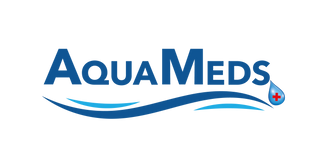Snake oil,say what? Why Live Microbes Do Work — and Why Your Backyard Pond Needs Them
Why Live Microbes Do Work — and Why Your Backyard Pond Needs Them
There’s a common belief that “Mother Nature will supply all the bacteria you need” and that anything in a bottle must be dead. That’s only part of the story. Beneficial microbes can absolutely remain alive in packaging, and in a man-made, recirculating koi pond, adding the right bacteria is one of the best ways to stabilize water quickly and safely.
Microbes Can Live in Packaging (Dormancy Is the Key)
Beneficial bacteria are living organisms that can enter a low-activity, protective state during storage and then “wake up” when conditions are right. In dry powders, many strains form hardy spores that remain viable for long periods. In liquids, bacteria are suspended with stabilizers and nutrients that keep them alive but inactive until they encounter oxygen, water flow, and food.
A simple everyday analogy is dry baking yeast: it sits dormant on the shelf for months, then springs to life when mixed with warm water and food. Packaged pond bacteria behave similarly—dormant, not dead—becoming active when added to your filter and pond.
Your Backyard Pond Is Not a Natural Pond
Natural ponds are refreshed by springs, rainfall, and streams, with vast surface area and long-established ecosystems. Backyard koi ponds are closed, recirculating systems with:
- Minimal new water input compared to nature.
- Limited filtration surface area relative to total waste produced.
- High stocking density (often 1 koi per ~100 gallons or more).
- Concentrated feeding that increases ammonia and organic load.
Because your pond does not receive nature’s constant influx of fresh microbes or water turnover, it benefits from a targeted addition of beneficial bacteria to establish and sustain biological filtration.
What About “Real” Nitrifiers Like Nitrosomonas?
Classic textbook nitrifiers such as Nitrosomonas and Nitrobacter are sensitive and can be difficult to package at high viability. Quality pond products address this by including robust, naturally occurring strains (often Bacillus, Paracoccus, and others) that survive storage, rapidly colonize media, and reduce ammonia, nitrite, and organics. These strains help bridge the startup period and prepare surfaces for the full nitrifying community to establish.
Do Bottled or Dry Bacteria Actually Help?
Yes. In new or stressed systems, beneficial bacteria:
- Shorten the risky start-up window while the biofilter matures.
- Process ammonia and nitrite sooner, improving fish safety.
- Outcompete undesirable microbes by occupying surfaces and consuming available nutrients.
- Stabilize water quality so your system reaches steady-state faster.
You cannot skip the nitrogen cycle entirely, but you can make those first weeks safer and more stable—especially important in ponds that already contain fish.
Not Every Pond Needs the Same Help
It’s worth mentioning that not every pond has the same biological demands. If you have a very low stocking density, have been keeping koi for many years, are further up the learning curve, and have invested in advanced filtration systems, you may not need to add bottled bacteria regularly. Your system may already support a stable microbial community naturally.
However, that doesn’t mean beneficial bacteria are ineffective in ponds that don’t show dramatic changes after dosing. Often, these microbes are working quietly behind the scenes—stabilizing water quality, consuming excess organics, and preventing ammonia or nitrite spikes before they become noticeable. Not seeing a major difference does not mean they aren’t performing an essential role.
Pond Design Still Matters
A well-designed pond with proper bottom drains, strong circulation, and few dead zones where debris can collect will always make microbial life more effective. These design elements reduce organic buildup, limit ammonia production, and make the nitrification process more efficient. But not every pond is “there” yet, and many hobbyists benefit greatly from the additional support live microbes provide as part of their regular maintenance routine.
Practical Use Tips
- Choose a bacteria product formulated for ponds and compatible with a range of temperatures.
- Dose into areas of strong circulation and directly onto filter media when directions allow.
- Maintain good aeration; nitrification is oxygen-intensive.
- Avoid overdosing oxidizers or harsh medications during initial colonization.
- Test ammonia and nitrite regularly; perform partial water changes as needed.
Bottom Line
Packaged beneficial bacteria are not “snake oil.” They are viable, dormant microbes designed to activate in your pond. Because a backyard, recirculating koi pond is fundamentally different from a natural pond—with higher fish density, more feeding, and less fresh water—adding proven beneficial bacteria is a science-backed way to protect your koi and stabilize your water faster. Even if results aren’t dramatic, they’re often quietly doing essential work behind the scenes.

